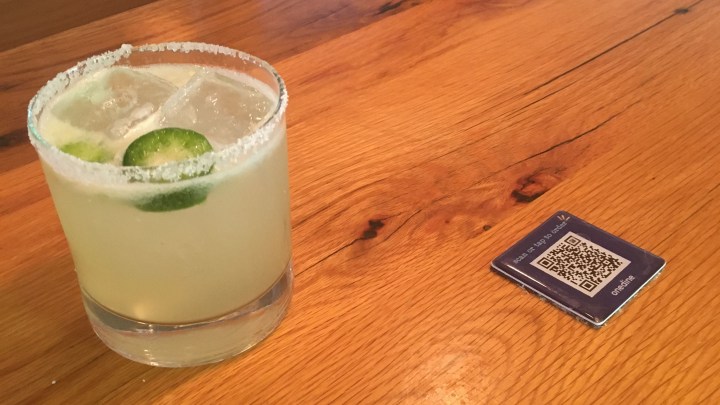
Restaurants find tech adopted during the pandemic serves them well
Restaurants find tech adopted during the pandemic serves them well

COVID-19 forced the restaurant industry to embrace technology that helped limit contact between staff and patrons, and people in the industry say much of that technology is here to stay. Take the QR code, a small square on display at the center of a table at an outpost of Bartaco in Atlanta, Georgia.
“Each QR code is unique to the table, so this is table 43, when the guest rings in on this QR code, the team knows it’s table 43,” said manager Jay Clarke, tapping his cellphone onto the code. A menu comes up and he selects some items.
“There goes my order, and they now are going to make a margarita and some guacamole,” he said.
There are no more waiters at this restaurant, just workers who bring out food. Patrons pay on their phone. The restaurant chain’s “on-demand service” was developed during the pandemic to minimize contact, but Bartaco CEO Scott Lawton wants to keep it.
“It was this weird sort of chocolate-peanut butter moment where we said, ‘Wait a second, this could be part of our service plan, going forward,'” he said.
Table QR codes have popped up in food courts and restaurants around the country. The technology allows a restaurant to hire fewer people, who in turn can earn more, Lawton said.
“We don’t pay a tax-tip wage any longer. We pay a full minimum wage, along with a tip, and everybody, including our dishwasher, is making $20 to $24 an hour,” he said.
COVID-19 has forced a big shifts like these industrywide, said Karen Bremer of the Georgia Restaurant Association.
“Ordering that food, selling the food and collecting payment on the food, every single one of those touchpoints changed,” she said. “The 14 months of technology changes for our industry would have normally taken five to 10 years to embrace.”
It’s made restaurants more efficient, Bremer said, without sacrificing hospitality. Still, on-demand dining at Bartaco is only an option; old-fashioned table service is still available for those who want it.
There’s a lot happening in the world. Through it all, Marketplace is here for you.
You rely on Marketplace to break down the world’s events and tell you how it affects you in a fact-based, approachable way. We rely on your financial support to keep making that possible.
Your donation today powers the independent journalism that you rely on. For just $5/month, you can help sustain Marketplace so we can keep reporting on the things that matter to you.


















